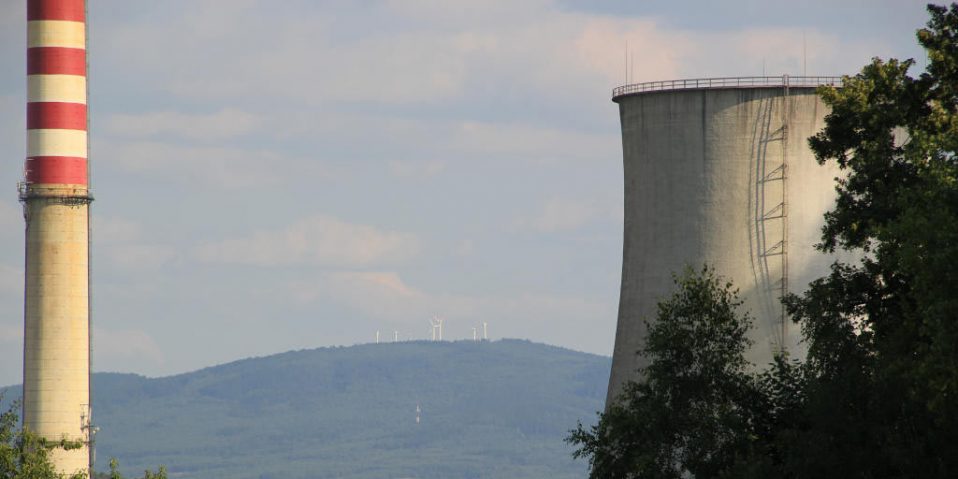Poland’s energy market at the crossroads
Even to maintain current levels of energy generation, Poland needs to invest huge amounts into energy generation capacity (between EUR 41 billion and EUR 98,5 billion by 2020 and factually upgrade or redesign its entire energy system:
- almost 85% of electricity is produced from coal
- two thirds of the installed coal capacity is older than 30 years
- almost 20% (7 gigawatt, more than the peak demand of energy in Scotland) of the current generation capacity have to be phased out by 2015
Poland’s plans for the energy sector
Poland’s Energy Policy until 2030 (pdf), the main strategic document for the country’s energy policy, makes clear that carbon intensive and climate damaging fossil fuels will remain the chief energy source for Poland:
- The share of renewable energies is to reach at least 15% of energy total production by 2020, but then only increase by a ridiculous one percent until 2030.
- At the same time nuclear energy is to reach 10% of final energy demand by 2030.
- The remaining 74% will still come from CO2 intensive energy sources!
- Poland plans to construct a capacity of 11 300 megawatts of coal power by 2020. This number dwarfs the currently installed capacity of renewable energy sources as the graph below shows.
Involvement of international financial institutions
The European Bank for Reconstruction and Development (EBRD) confirmed in meetings that it will not finance any coal project in Poland. (It does, however, support the Sostanj lignite power plant project in Slovenia.)
The European Investment Bank (EIB) on the other hand has already approved a loan to a coal-fired combined heat and power plant (CHP) in Bielsko Biala.
New EIB investments in Polish coal would be a shameful disregard not only of the banks’ responsibility for global and local impacts, but also of the EU’s climate and energy package and energy roadmap 2050.
Investments in big-scale fossil fuels projects contradicts and impedes the quick and effective development of a renewables based economy:
- If financial resources are being bound by fossil fuel projects, less money is available for green alternatives that often struggle for access to start up financing.
- The electricity transmission networks of traditional energy pose disadvantages for renewable energy sources. Burdens for small producers to access the Polish energy grid bring further disincentives for renewables.
International financial institutions, including the EIB and the EBRD should not lend financial support to coal fired power plants.
The plan to stick with coal is being pursued and promoted vigorously by Polish decision makers and the country’s leaders in the energy sector:
- Statements by the government and state-owned energy companies show their conviction that coal will be Poland’s main energy source for years to come.
- Coal is portrayed as Poland’s black gold, while the EU climate and energy package is considered a danger to Poland’s energy system.
- A Polish lobby group pushes hard for the EU to promote coal. The Polish government supports the group.
- The Polish government is trying to receive free CO2 emission allowances (2013 onwards) for its installed and planned coal power plants thus trying to ensure hidden coal subsidies.
Polish coal lobby aiming for Europe
The Polish government supports Central European Energy Partners(CEEP), a lobby effort of some of Poland’s biggest energy companies, claiming to be the voice of central and eastern European countries.
CEEP lobbies the European Commission to not further tighten environmental policy and instead promote energy from coal. Coal should become the priority, with no emissions limits or CCS (carbon capture and storage) requirements.
„The current situation in Poland shows that air pollution with coal for energy production will not decrease in the near future. It is therefore a great opportunity for Poland to look for opportunities to invest in renewable energy and work actively with international financial institutions on this issue. However, Poland’s plans look different. The largest countries producing coal are the USA, Russia, Ukraine, Poland, China, Germany, Australia and others. Unfortunately, the problem of air pollution with coal for energy production and heating of houses is relevant for many countries. For example, Ulan Bator (Mongolia) is not only one of the coldest capitals on earth, it’s also a city with massive air pollution. During the winter months, yurts (little houses) are heated with coal and wood which contributes up to 70 percent of the smog in the city. Air pollution in Ulan Bator is seven times higher than what is considered safe by the World Health Organization. And that is just one city“- said EEAG Vice-president A.Jurgelevičius.
Source: https://bankwatch.org/project/coal-fired-power-plants-in-poland



